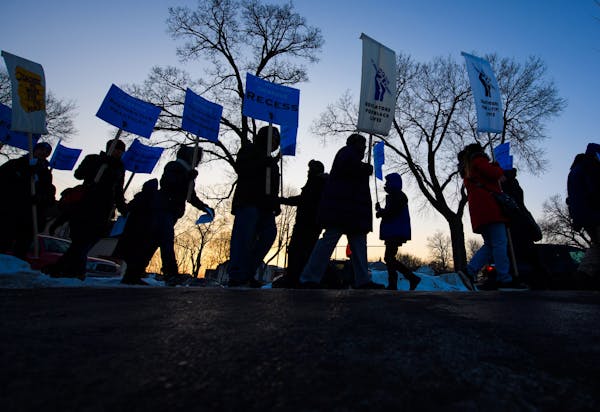More than 100 parents, students and school employees pleaded with the Minneapolis school board Tuesday night to preserve jobs and funding in the face of a massive deficit.
Students in the Spanish Heritage program at Roosevelt High School carried "Our School, Our Heritage" signs and implored district leaders to not "delete our history."
Superintendent Ed Graff said that the district is monitoring equity as it makes the cuts.
"We're making extremely difficult decisions now, which I know has an impact on every single person in this district," he said. "Our goal is to create a sustainable learning environment for all students in the coming years."
One of the protesters yelled: "How about now?"
Protesters also put pressure on school board members to pass a resolution that would allow district leaders to tap reserves until other options are found.
The school board voted to do so, with limits.
Five of the board's nine members — Rebecca Gagnon, Bob Walser, Siad Ali, KerryJo Felder and Ira Jourdain— voted for a resolution directing the district to immediately restore $6.4 million in time-adjustment funding to secondary schools without going below the district's projected fund-balance level and without additional cuts to schools.
Graff also sent a letter Monday, saying that Washburn would get $241,800 in one-year targeted assistance, and Southwest would get $293,000, according to the district's preliminary OnTrack per pupil information. Both schools have lost Title 1 funding.
The school board also approved the two-year tentative contract that offers teachers a 0.5 percent pay hike, retroactive to July 1, 2017. The pay increases would cost the school system $2.4 million, which is also projected in the budget.
Last year, the state's third-largest school system announced that it faced a $33 million deficit for the 2018-19 school year, largely because of declining enrollment and revenue that hasn't kept up with inflation and rising operating costs. For the past seven years, the school system has tapped its reserves to cover shortfalls.
District leaders have said that is no longer an option. The money used only for one-time programs or emergencies has dropped from $122 million to $42 million and is expected to drop to $25 million by the end of the school year.
Graff said the district has had to pick up more special education costs not funded by state or federal sources. Last year alone, he said, the district pulled $56 million from its general fund to spend on special education.
Discontent has been rising since the district recently said that it would eliminate 350 to 400 full-time positions. At the building level, Patrick Henry is expected to cut $1.9 million, putting jobs of Japanese, English, math and physical education teachers on the chopping block.
At Washburn, $1.6 million in cuts, or 13 percent of the budget, could mean losing social workers and security staff. The number of counselors would drop from six to two for the 1,600-student high school.
In addition to the school cuts, the district is looking to adjust transportation and lobby state legislators for more special education funding. Voters also may be asked to pitch in more through an extra $18 million referendum and $12 million technology levy in November.

A plume of PFAS chemicals under the east metro is moving. The state has a new plan to stop it.

Andover High School teacher leads effort for more understandable driver's tests

Trail section at one of Minnesota's most iconic spots closing for rehab

Will 'shotgun only' zone for deer in southern Minnesota be abolished?

